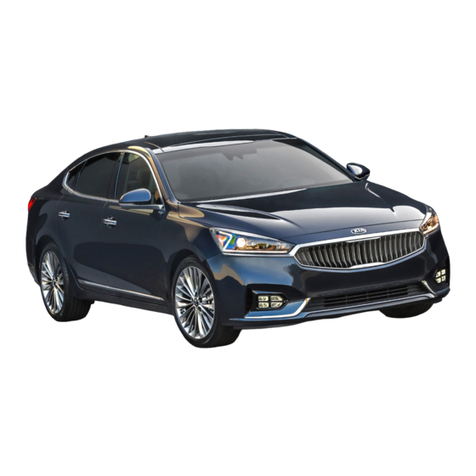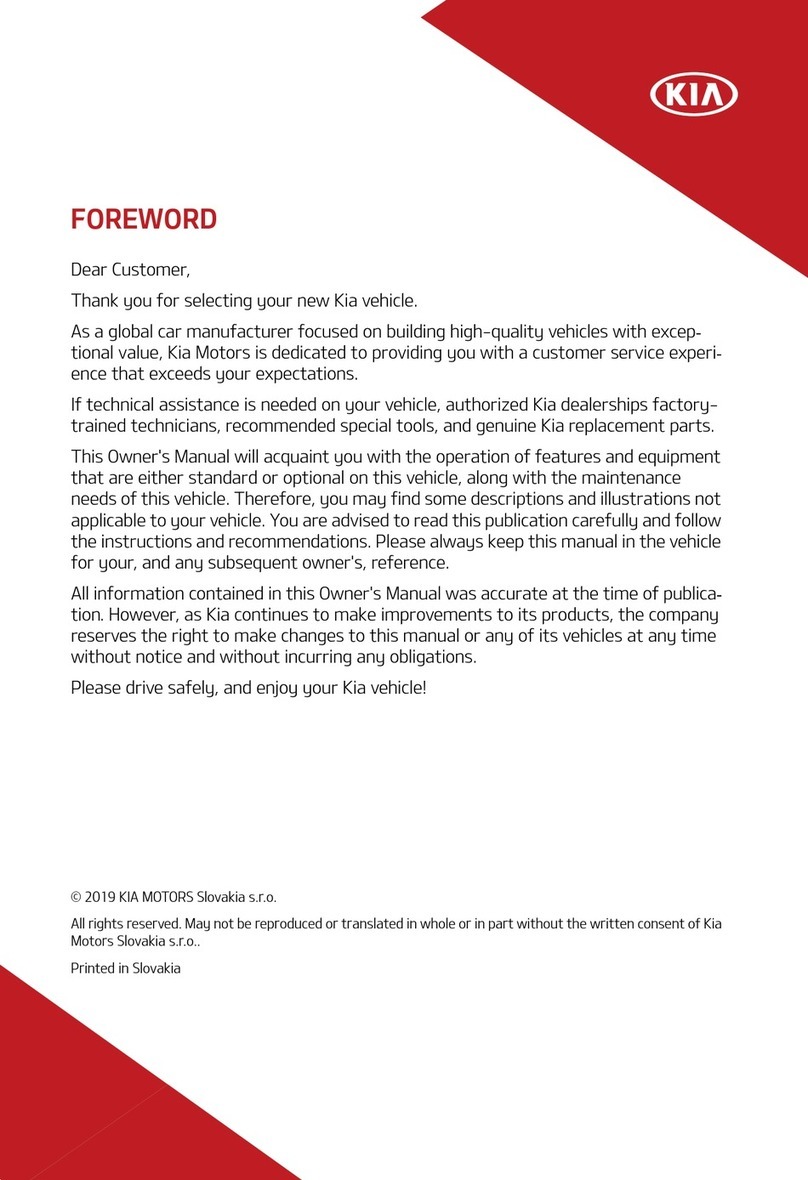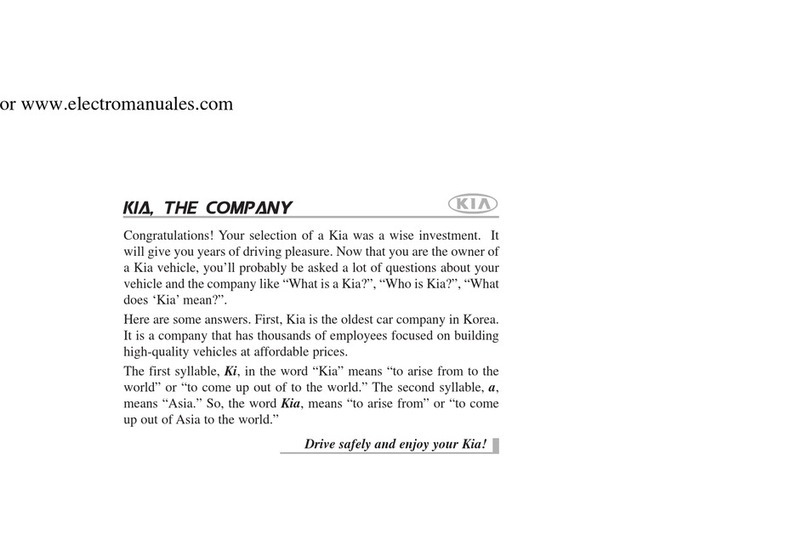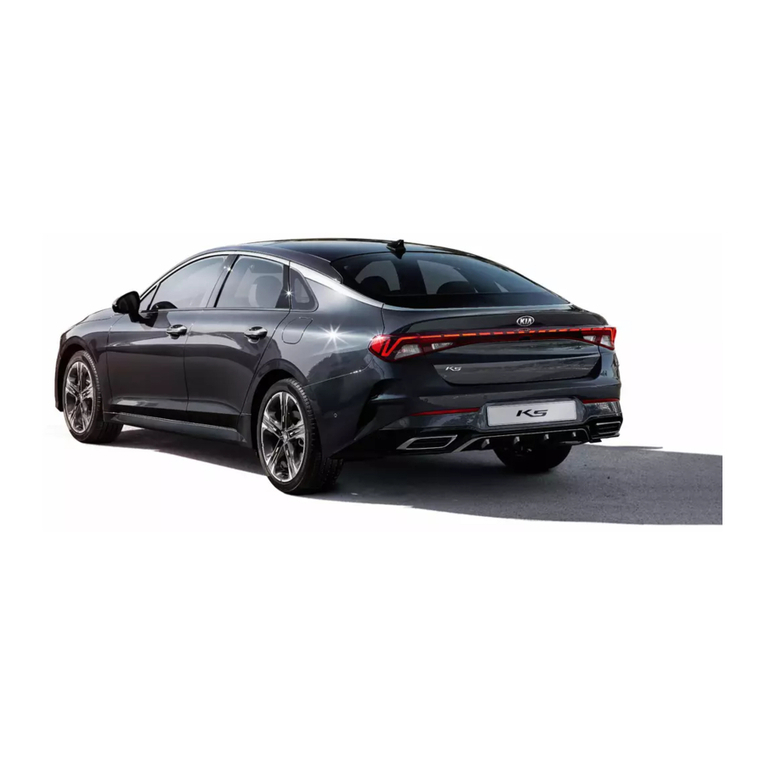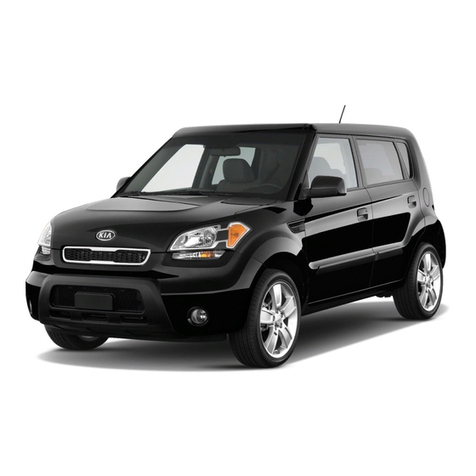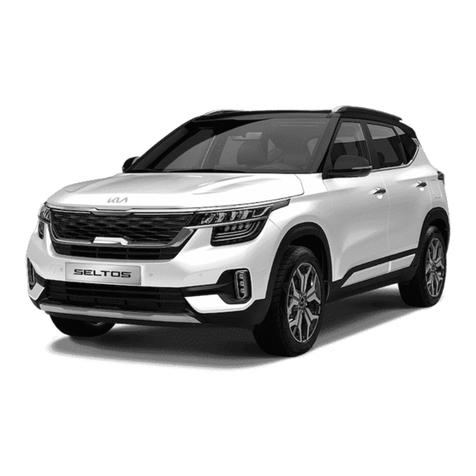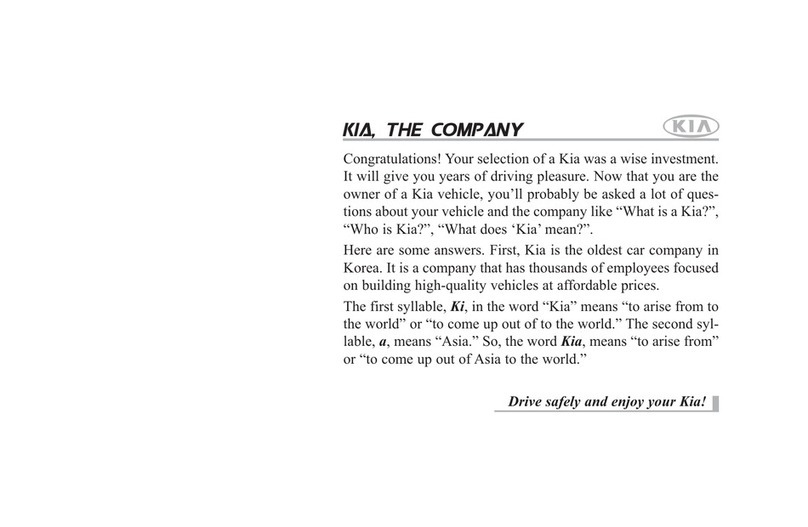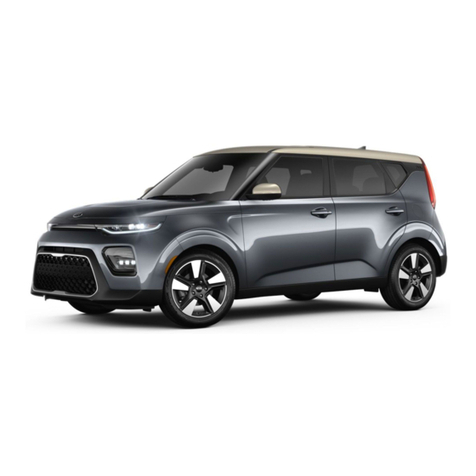
Features of your vehicle
Lighting Control / Tilt & Telescopic Steering / Cruise Control*
Lighting control [4]
1 OFF position
2 Auto light position*
3 Parking light position
4 Headlight position
Auto light position*
When the light switch is in
the AUTO light position, the
taillights and headlights
will be turned ON or OFF
automatically depending on
the amount of light outside
the vehicle.
Tilt & telescopic steering [4]
To change the steering wheel
angle, pull down the lock release
lever (1), adjust the steering
wheel to the desired angle (2) and
height (3), then pull up the lock-
release lever to lock the steering
wheel in place. Be sure to adjust
the steering wheel to the desired
position before driving.
To decrease the cruising speed:
Follow either of these procedures:
• Move down the SET- switch and hold it. Your vehicle set
speed will decrease by 10 km/h (5 mph). Release the lever at
the speed you want to maintain.
• Move down the SET- switch and release it immediately.The
cruising speed will decrease by 1.0 km/h (1.0 mph) each time
you move down the SET- switch in this manner.
*: if equipped
Type A
Type B To set cruise control speed:
1. Press the driving assist
(CRUISE/ ) button on the
steering wheel, to turn
the function on. The cruise
status on the LCD screen
will appear.
2. Accelerate to the desired
speed, which must be more
than 30 km/h (20 mph).
3. Move down the SET-
switch, and release it at the
desired speed. The cruise
status on the LCD screen
will appear. Release the
accelerator pedal at the
same time. The desired
speed will automatically be
maintained.
To increase cruise control set
speed:
Follow either of these
procedures:
• Move up the RES+ switch
and hold it. Your vehicle set
speed will increase by 10
km/h (5 mph). Release the
lever at the speed you want.
• Move up the RES+ switch
and release it immediately.
The cruising speed will
increase by 1.0 km/h (1.0
mph) each time you move
up the RES+ switch in this
manner.
Cruise control switch [6]
CANCEL / O: Cancels cruise
control operation.
CRUISE / : Turns cruise
control on or off.
RES+: Resumes or increases
cruise control speed.
SET-: Sets or decreases cruise
control speed.


